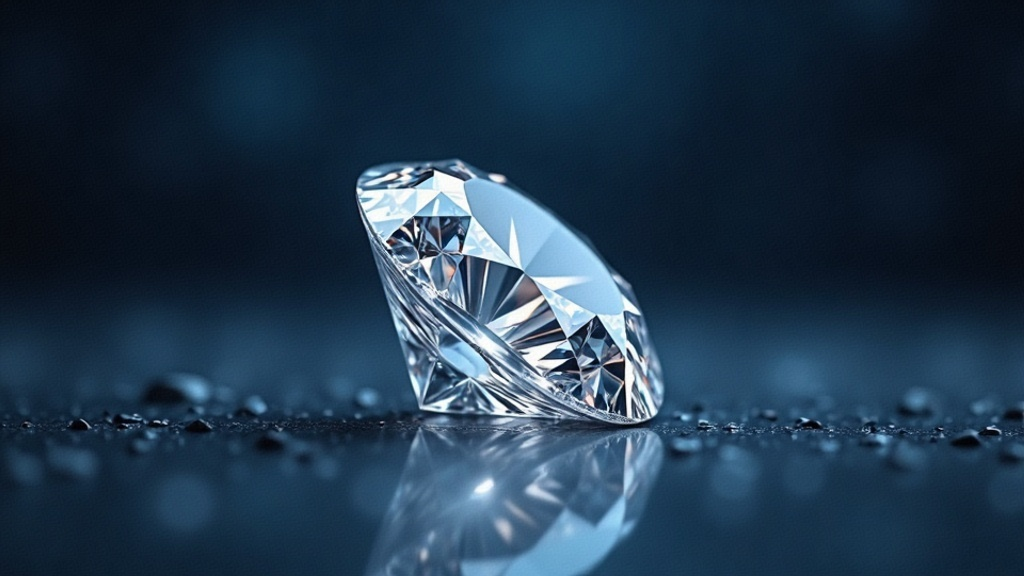Pos:
Home KnowledgeTechnologyThe Application of Boron-Doped Diamond in Ultra-High Temperature HeatersAs a new type of functional material, boron-doped diamond has become an ideal choice in the field of ultra-high temperature heating due to its unique physical and chemical properties. In terms of high-temperature resistance, in-situ high-temperature X-ray diffraction experiments have confirmed that the crystal structure of boron-doped diamond shows no significant change at 2000°C, whereas pure diamond undergoes graphitization transformation when the temperature exceeds 1400°C. This is because the introduction of boron atoms enhances the stability of C-C bonds and forms a more compact lattice structure.

Studies have shown that in terms of electrical properties, when the boron doping concentration ranges from 10¹⁸ to 10²¹ atoms/cm³, the electrical conductivity of BDD can be adjusted from 10⁻² S/cm to 10³ S/cm, exhibiting a typical semiconductor-to-metal transition characteristic. This wide-range conductivity tunability allows BSD to be precisely designed according to different heating power requirements. Furthermore, its temperature coefficient of resistance (TCR) remains stable (±0.05%/℃) in the high-temperature range (1000-2000℃), which is far superior to traditional heating materials such as platinum (with a TCR of approximately 0.39%/℃), ensuring temperature controllability during the heating process.
In terms of chemical stability, using a dynamic corrosion test device, BDD samples were immersed in 98% sulfuric acid, 37% hydrochloric acid, and 50% hydrofluoric acid at 800℃ for 100 consecutive hours. Detection via inductively coupled plasma mass spectrometry (ICP-MS) revealed that the corrosion rate of BDD was lower than 10⁻⁹ g/(cm²·h), while the corrosion rate of silicon carbide under the same conditions was 10⁻⁶ g/(cm²·h), fully demonstrating its excellent corrosion resistance. This property enables it to work stably in extreme experimental environments containing corrosive media such as acids, alkalis, and halogens.
Material characterization after long-term operation shows that the full width at half maximum (FWHM) of the Raman characteristic peak (1332 cm⁻¹) of the BSD film only increases by 0.5 cm⁻¹, indicating no significant degradation of the crystal structure. Meanwhile, X-ray photoelectron spectroscopy (XPS) analysis reveals that the surface oxygen content increases by 2.3 at% (atomic percent), leading to the formation of a protective oxide layer (B₂O₃)—a key factor contributing to its high-temperature stability. Comparative experiments demonstrate that under the same conditions, the silicon-molybdenum rod heater exhibits a noticeable power attenuation (>20%) after 50 hours of operation.
In-situ monitoring via synchrotron radiation X-ray diffraction revealed that the lattice of BDD crystals undergoes compression under high pressure (with the c/a ratio decreasing from 1.002 to 0.998), while no phase transition occurs. First-principles calculations, on the other hand, indicated that the presence of boron atoms increases the bulk modulus of diamond from 443 GPa to 458 GPa, enhancing its high-pressure resistance. This experiment provides a reliable heating solution for mantle mineral synthesis and high-pressure phase transition research.
In the aerospace field, BSD array heaters have been successfully applied in ablation experiments of thermal protection materials for spacecraft. They can simulate an aerodynamic heating environment with temperatures ranging from 1500 to 2500℃, and the temperature control accuracy reaches ±2℃, providing key data for the performance evaluation of new ceramic matrix composites. Compared with traditional arc heating, their energy utilization rate has increased from 30% to 65%, and the experimental cost has been reduced by 40%.
In the energy sector, BSD heaters have demonstrated unique advantages in the testing of thermal storage materials for solar thermal power generation. Leveraging their stable performance at temperatures between 1000 and 1500℃, long-term monitoring (for 1000 hours) of the thermal stability of molten salts (NaNO₃-KNO₃) was conducted. It was found that these heaters can accurately capture the critical temperature (1105℃) for salt decomposition, laying a foundation for the safe design of thermal storage systems.
In cutting-edge scientific research, the combined technology of BSD heaters and laser heating has achieved ultra-high temperature extreme conditions above 3000℃. This technology has been used in attempts to synthesize metallic hydrogen under high pressure, opening up a new avenue for the study of material science under extreme conditions.
Boron-doped diamond ultra-high temperature heaters, with their outstanding comprehensive performance, are reshaping the technical paradigm of experiments under extreme conditions. As continuous breakthroughs are made in material preparation, structural design, and packaging technology, their influence in cutting-edge scientific research and industrial applications will continue to expand, providing strong technical support for humanity's exploration of the material world under extreme environments.
The boron-doped single-crystal diamond produced by CSMH can achieve doping from low concentration to high concentration. It has realized a uniform and controllable concentration and a customizable boron doping process.CSMH uses the MPCVD method to prepare large-sized and high-quality diamonds,and currently has mature products such as diamond heat sinks, diamond wafers, diamond windows,diamond hetero junction integrated composite substrates,etc.
 闽ICP备2021005558号-1
闽ICP备2021005558号-1Leave A Message